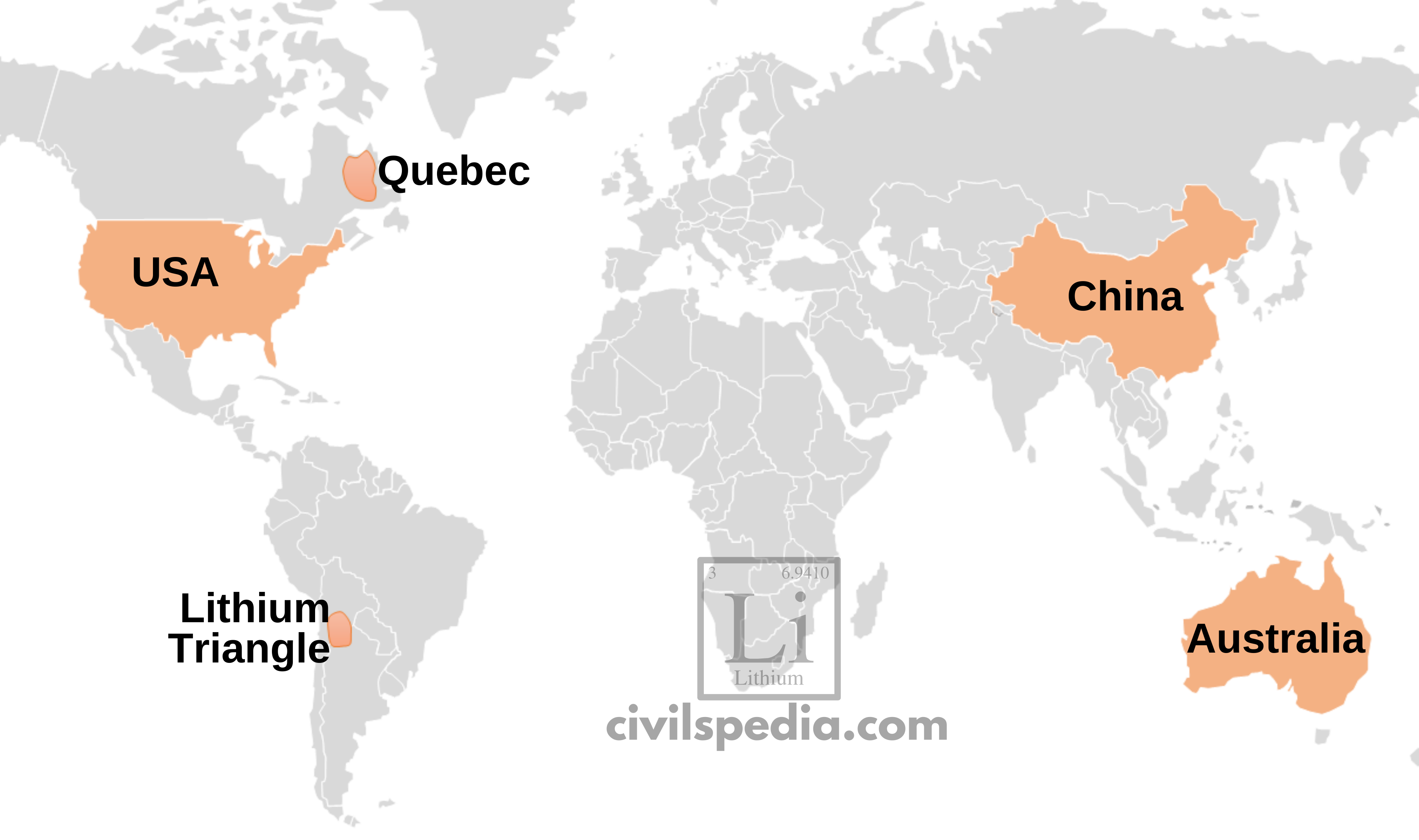Table of Contents
Lithium (UPSC Notes India)
This article deals with ‘Lithium (UPSC Notes India).’ This is part of our series on ‘Geography’, which is an important pillar of the GS-1 syllabus. For more articles, you can click here.
Introduction
- Lithium is the lightest solid metal.
- It is mainly produced from hard rock or brine mines.
- Major Lithium Ores include
- Spodumene: Primary source of Lithium which contains high concentrations of Lithium (between 3% to 7.6%)
- Petalite: Another important Lithium ore.

Use of Lithium
Lithium Batteries
- Lithium Batteries or Lithium-ion Batteries is the primary use of Lithium due to their use in electric vehicles, smartphones, tablets, laptops etc. Lithium-ion batteries are popular as they have high energy density, long lifespan, and lightweight nature.

Other Minor Uses
- Heat-resistant glass and ceramics
- Lithium Grease Lubricants: These can withstand high temperatures
- Flux additives for iron, steel and aluminium production
- Optics
- Thermonuclear Weapons
- Coolant in Nuclear Processes: Lithium has the highest specific heat capacity of all the solids
- Fuel for Rocket Propellants: Complex hydrides of Lithium such as Li[AlH4]
Global Distribution
- Australia: It is the world’s biggest supplier, which produces it from hard rock mines.
- Lithium Triangle: The Lithium Triangle consists of Lithium rich region in Argentina, Bolivia and Chile.
- Chile: It is the second-largest producer of Lithium. Salar de Atacama is very rich in Lithium.
- Argentina: It is found in the salt flats of Salinas Grandes and Hombre Muerto.
- Bolivia: It is found in the brine deposits of Salar de Uyuni.
- China: China’s Tibet, Qinghai, and Sichuan are rich in Lithium.
- Canada: In Canada, Quebec is rich in Lithium.
- United States: Nevada, North Carolina, and California have Lithium deposits.

Indian Distribution of Lithium
- In India, the first traces of Lithium were discovered in the ancient igneous rock of Karnataka’s Mandya district.
- Apart from that, Lithium reserves are also found in
- Jammu and Kashmir
- Karnataka
- Jharkhand
- But currently, India imports all its lithium needs from other countries.
Steps taken by Indian Government
- National Mission on Transformative Mobility: To encourage domestic Lithium-Ion Cell manufacturing and EV components.
- ISRO and BHEL Agreement: To develop low-cost lithium-ion batteries.
- India’s first lithium cell plant manufacturing facility will be launched in Tirupati, Andhra Pradesh.
- Strengthening relationship with Lithium Triangle Nations: India is focusing on ‘Lithium Triangle’ nations Argentina, Bolivia and Chile.
